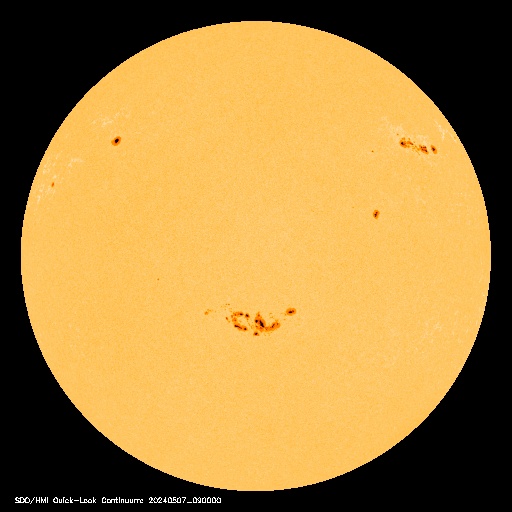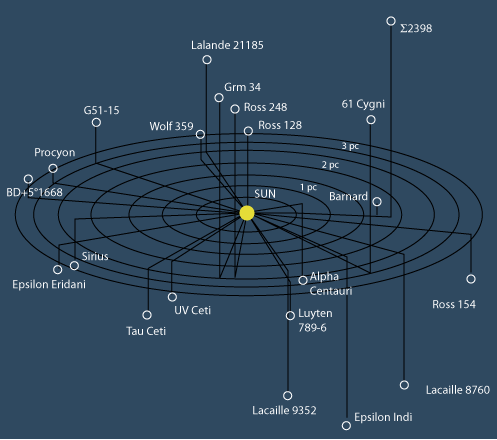 Meteor Showers |
 Tonight's Sky |
|
Your Sky planets and constellations on Thu, 03-Apr-2025 03:43pm CDT
See Icon meanings
| Sun/Moon Data for Lincoln NE: | |||
Sunspot Activity
|
Sunset: 7:52 PM Sunrise: 7:06 AM DIY Sunspot Viewer |
|
37% illuminated - Waxing Crescent Moon Moonrise: 10:27 AM (03-Apr-2025) New Moon: Sun, 27-Apr-2025 2:32pm CDT Full Moon: Sat, 12-Apr-2025 7:23pm CDT |
 Graph courtesy: Newquay Weather |
Space Wx |
Astronomy Fact
When you look at the Andromeda galaxy (which is 2.3 million light years away), the light you are seeing took 2.3 million years to reach you. Thus you are seeing the galaxy as it was 2.3 million years ago.
Forecasts courtesy of: ClearSky and 7timer
| Color Key |
| Worse | Better | Best | Sky (including Wind) | ||||||||||
| Worse | Best | Worse | Ground |
Space Track-Satellite Passes
When using lookangles, choose passes with high magnitudes; less than 6.0. ("Looks" are local time.)
Best viewing is when ESV is in Earth's penumbra; on the map, it's the solid line during night.
Dotted line on map denotes ESV is dark, in Earth's umbra (shadow).
Objects in orbit have to maintain a speed of at least 17,500mph, therefore ESVs traverse the sky noticeably different than aircraft.
ESVs appearing to blink are either tumbling rocket bodies, or spinning payloads with deployed solar arrays.
High-Eccentricity objects have a more ellongated orbit. Ground trace looks like a backwards C.
Regression-Ground traces will move West with each orbit due to Earth's rotation.
Page template and Facts script courtesy of: TNET Weather on Weather-Watch.
Page Template and Moon script courtesy of: Saratoga Weather.
Graph base code courtesy of: jpGraph.

 Scan With Phone's Bar Code Reader
Scan With Phone's Bar Code Reader





